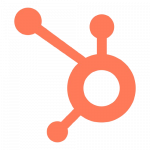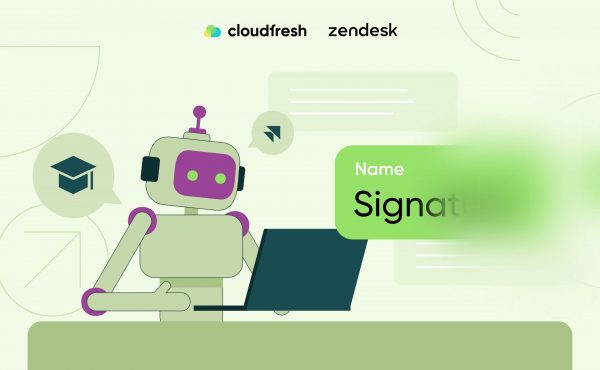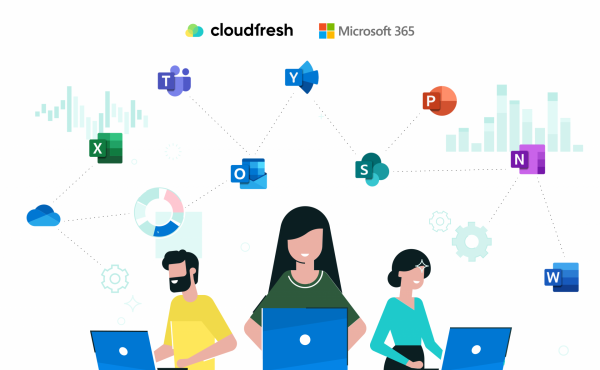How Does Google Agentspace Integrate with Existing Enterprise Systems?
How JumpCloud HRIS Features Integration Breathes Life into Employee Lifecycle
- Before We Start: What Is JumpCloud, Exactly?
- When People, Technology, and Identity Operate Together

- The 3 Hottest Trends Driving the HR-IAM Duo

- JumpCloud HR Compliance Features: The Global Data Privacy Mandate
- JumpCloud HR Workforce Management Features in Focus

- Discover What JumpCloud HRIS Features Bring to the Table
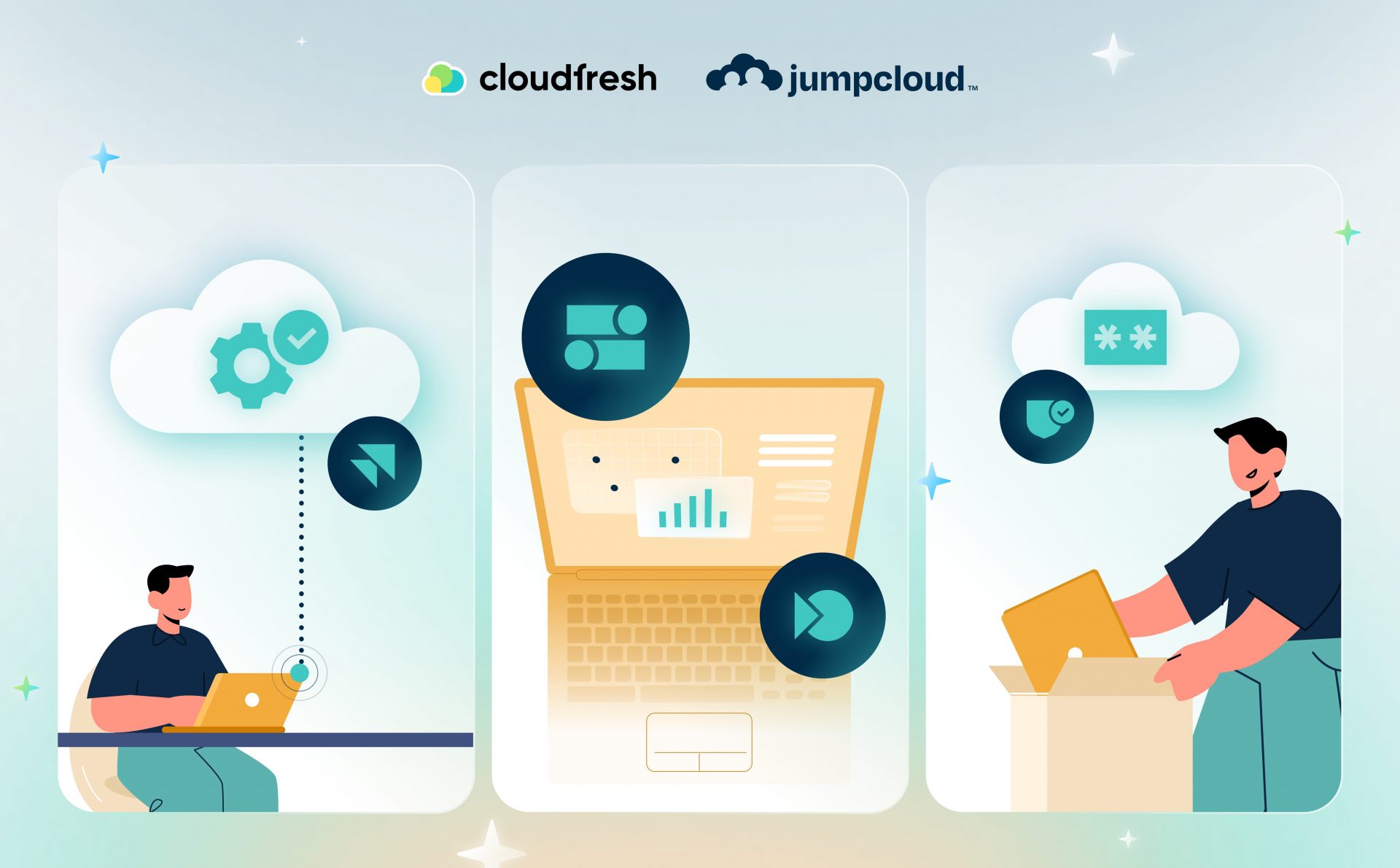
The collaboration between HR (Human Resources) and IAM (Identity & Access Management) has moved far beyond an IT side project.
It’s now a critical piece of business strategy.
The shift comes from three big forces: the rapid growth of generative AI, the spread of hybrid and distributed work, and the tightening web of global data privacy rules.
Combined, these changes are reshaping how HR and IT work together at a fundamental level.
This article highlights the key trends driving that shift and shows how JumpCloud’s HRIS features help bring Human Resources and Information Technology onto the same page.
The goal is not only stronger security and better efficiency, but also a smoother and more engaging employee experience.
Before We Start: What Is JumpCloud, Exactly?
Think of JumpCloud as your organization’s cloud-native control center for identity, access, and device management packed into one neat, powerful package. From a single dashboard, you can manage user accounts, enforce Single Sign-On (SSO), roll out Multi-Factor Authentication (MFA), and secure everything with Zero Trust principles. And yes, all of this works across a mix of devices and platforms without the headache of on-prem hardware.
But there’s more! Say hello to HRIS integration, a key piece of functionality that rounds out the identity lifecycle offering. The platform supports out-of-the-box connectors for popular tools like Personio, Workday, Bob…and more. Plus, thanks to flexible, open APIs, you can link virtually any Human Resources Information System you use.
When People, Technology, and Identity Operate Together
With rapid changes in technology and work itself, companies can’t stay boxed into old departmental lines.
What they need is an approach to people management that’s data-driven and centered on both the human and the technical.
Strong HR-IAM integration is what makes that kind of shift possible.
Forgetting People Management Silos
McKinsey points to a new model for people management taking shape, one born out of major disruptions like new tech, hybrid work, and the realities of a multigenerational workforce.
The idea is “more personal, more tech, more human.”
It marks a real move away from reactive, administrative work toward something proactive, fluid, and rooted in data.
In this vision, up to 66% of today’s HR tasks could be automated, opening the door for HR teams to take on more strategic roles.
This new model revolves around a trio of specialized roles: People Strategists who guide leaders, People Scientists who design solutions with data, and People Technologists who build the systems that support them.
The link between HR and IAM is the technical backbone that makes it all work. In turn, JumpCloud HRIS features are the backbone of that link.
With essential HR processes like Joiner-Mover-Leaver (JML) automated, your team is freed from repetitive tasks and can focus on work that adds greater value.
The cause-and-effect is clear: identity automation sets the stage for HR’s progression into a strategic, people-focused function.
From Administrative Hub to Strategic Powerhouse
A Gartner survey of more than 1,400 HR leaders confirms the shift in motion: Human Resources technology is one of the top priorities for 2025.
But it’s not an end in itself. It’s the lever for bigger goals like workforce planning, culture, and change management.
Deloitte’s research echoes this point—high-performing teams don’t chase HR tools for their own sake. They invest in technology that supports the company’s broader strategy.
And when it comes to AI, the focus isn’t on replacing people. It’s on unlocking talent and strengthening what people can do.
Bringing HR and IAM together changes the HRIS from a record-keeping tool into a central, trusted source of truth for identity and access, as evident from PwC’s research.
With one reliable data set, a “people transformation team” of leading professionals across HR, IT, and the business can make decisions from the same playbook.
The 3 Hottest Trends Driving the HR-IAM Duo
Let’s now examine some of the most recent and impactful changes that have happened to the Human Resources industry in terms of how identity and access are granted, controlled, and revoked.
Trend #1: The Agentic AI and Intelligent Automation on the Rise
Generative AI and AI agents are moving fast into Human Resources. In mid-2023, only 19% of HR leaders were planning or using GenAI. By early 2025, that number had soared to 61%, according to Gartner.
The change brought about by, for example, JumpCloud HRIS features isn’t limited to automating repetitive work.
It’s creating a workforce where routine tasks fade, and new, hybrid roles appear that blend business insight with technical skill.
The same wave is influencing IAM. Forrester notes that Privileged Identity Management platforms are evolving into intelligent, AI-driven systems central to “agentic AI security.”
They bring Zero Trust to life by using risk-based analytics to spot and block identity threats before they hit.
The link is clear: as HR reshapes jobs with AI, IAM has to grow smarter to protect both human and machine identities.
The risk isn’t only a person making an error. It’s also an AI agent with permissions that reach too far.
That’s why the HR-IAM system must govern a wider spectrum of identities with a level of automated intelligence we haven’t seen before.
Trend #2: Security without Friction
Gartner refers to a “counterproductive narrative” in security today: employees and security teams often feel at odds, which weakens the very protections meant to keep organizations safe.
Many workers see cybersecurity rules as too complex, impractical for their jobs, or buried in lengthy guidance.
That frustration has sparked a shift toward a human-centric approach, one that treats employees as allies in security, not the weakest link.
This shift has direct implications for IAM.
Controls now need to factor in human behavior and focus on creating the least possible friction. That means designing access and authentication journeys that are simple, clear, and efficient.
A centralized identity platform like JumpCloud makes this easier by serving as a single source of truth. It improves the user experience for employees and IT alike while reducing manual effort and cutting down on mistakes.
With the JumpCloud HRIS features, employee data flows instantly into the console, keeping access accurate and security tight.
Trend #3: Zero Trust and the Employee Lifecycle
Zero Trust has evolved from a perimeter-focused model into one built around identity, applying the principle of “never trust, always verify” to every request for access.
For today’s distributed workforce, this shift is essential.
The employee lifecycle, which is often called the Joiner-Mover-Leaver (JML) process, provides the structure for putting Zero Trust into practice.
The aim is full privileged identity lifecycle management to reduce standing access, limit attack surfaces, and contain privilege sprawl.
This relies on two core ideas:
- Least Privilege, granting only the access required for a role.
- Just-in-Time (JIT) Privilege, which provides temporary, time-bound access.
JumpCloud’s HRIS features bring this vision into action. By treating the HRIS as the single source of truth for an employee’s role and status, it triggers automated workflows that grant or remove access at exactly the right moment.
This marks a clear break from outdated “access by default” models, replacing them with a more secure “access by necessity” approach.
With open HRIS integration, JumpCloud keeps identities and access current as roles shift, making sure every user always has the proper permissions.
In this model, the HRIS isn’t only a record system.
It becomes a core part of the security architecture itself.
JumpCloud HR Compliance Features: The Global Data Privacy Mandate
HR-IAM integration isn’t only about efficiency and stronger security. It’s also a safeguard against growing compliance risks.
Around the world, data privacy rules are tightening and reshaping HR practices.
- In the E.U. and U.K., the GDPR sets strict standards for handling employee data, making it clear that consent alone isn’t enough because of the “imbalance of power” between employer and employee.
- In the U.S., the California Consumer Privacy Act (CCPA) now extends its protections to cover HR data as well.
JumpCloud HRIS features help companies meet these rising expectations.
Its open directory platform supports compliance with frameworks like ISO 27001 and HIPAA while serving as a single source of truth within the identity and access domains.
That foundation lowers risk, makes audits easier, and keeps employee data secure.
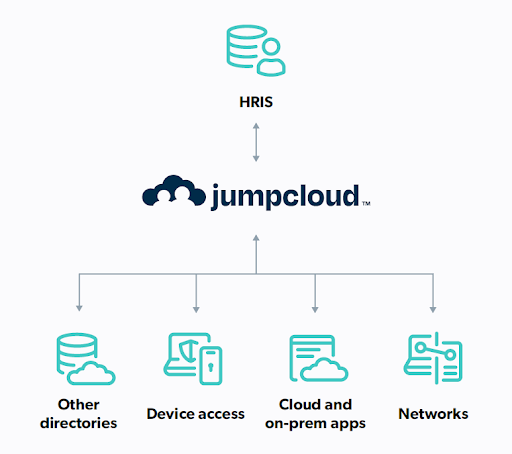
JumpCloud HR Workforce Management Features in Focus
Now that we’ve set the strategic stage, it’s time to look at how the company is putting HR-IAM integration into practice through the lens of relevant JumpCloud case studies.
The platform delivers a unified approach to identity and device management, designed to connect HR and IT in one place.
Native JumpCloud HRIS features make sure employee details are reflected in the console the moment they change, eliminating gaps and delays.
This capability ties directly into JumpCloud’s broader mission: to unify cross-platform device management and simplify the IT stack.
Where Automation Starts: JumpCloud HR Onboarding Features & Broader Joiner-Mover-Leaver (JML) Workflows
The Joiner-Mover-Leaver workflows are front-and-center when it comes to HR-IAM integration.
These automate the lifecycle of an employee by provisioning accounts and access for Joiners, updating them for Movers, and securely deprovisioning them for Leavers.
JumpCloud’s HR workforce management features cut out unnecessary manual work and bring the chance of errors to a low.
The result is faster onboarding, smoother transitions, and safer offboarding, all powered by automation.
For example, to set up a pre-built HRIS connector, the process involves a few simple steps:
- Create a new API key in JumpCloud.
- Install JumpCloud as an app in the supported HR management solution.
- Choose when to send data to JumpCloud, what fields to send, and add the API key.
This integration uses the industry-standard SCIM 2.0 protocol and becomes active immediately, with data changes reflected in the JumpCloud console at the specified interval.
Flexible Integration & User Privilege Management
JumpCloud’s HRIS features are built for flexibility.
Along with pre-built connectors for leading HRIS platforms, it can also link to any system that supports standard protocols like SCIM, REST API, or API Key/Bearer authentication.
This openness gives IT teams centralized control over account setup, identity creation, and access management, all without juggling manual updates across different platforms.
The same flexibility applies to managing user privileges.
Moreover, while there are no standalone JumpCloud features for employee scheduling, leave management, or payroll, all of these are possible thanks to connectors.
How Do JumpCloud and Okta Stack Up?
JumpCloud and Okta are two leading vendors in HRIS-IAM integration.
| Feature/Capability | JumpCloud’s Approach | Okta’s Approach |
| Integration Philosophy | Aims to be a unified, cloud-first directory for managing device, identity, and user access. | Connects a wide range of HR systems and directories to consolidate identities into a single plane. |
| Automation Style | Focuses on automated on- and offboarding to reduce manual intervention and human error. | Emphasizes “no-code” automation with Okta Workflows, allowing less technical users to build complex logic. |
| Primary Value Proposition | Reduces risk and supports compliance by providing a central source of truth for identity and access. | Increases productivity and simplifies the process of creating user accounts and configuring access. |
JumpCloud’s HRIS features help customers like Alimetry meet ISO 27001 compliance by automatically provisioning users into systems such as Google Workspace and Microsoft 365, making onboarding new employees easy.
The Asheville Recovery Center mentions that JumpCloud HR onboarding features remove unnecessary steps and let IT admins manage users from anywhere, even on a mobile device, all while following strict HIPAA rules.
Xeneta improved both onboarding and offboarding processes, provisioning users in one place once they appear in the HR system and setting up access across all tools, which improved the new hire experience.
This focus on a single platform that simplifies IT and supports compliance reflects JumpCloud’s mission to unify identity and device management.
As for Okta, it highlights its Lifecycle Management platform, especially its “no-code automation platform” called Okta Workflows.
This lets non-technical users manage complex identity processes with a visual drag-and-drop interface without writing code. It also helps firms like Priceline and Workday automate tasks that were previously cumbersome.
Think of speeding up application provisioning or updating multiple systems at once, with changes automatically flowing to all connected applications.
Choosing between these vendors is a strategic call, based on your organization’s key priorities and the challenges you want to solve.
The good news is that Cloudfresh is both a JumpCloud Gold Partner and an Okta Activate Partner, so you can get high-quality assistance with either solution.
Discover What JumpCloud HRIS Features Bring to the Table
HR functions are no longer separate from IAM. New technologies, hybrid work, and global regulations are changing how companies manage people, identities, and access.
A unified approach, powered by platforms like JumpCloud, makes it possible to automate routine tasks, strengthen security, support compliance, and lift HR from an administrative role to a strategic one.
With JumpCloud HRIS features, organizations gain a single source of truth for employee data, make the Joiner-Mover-Leaver process flow on the go, and apply security best practices that work with people, not against them.
In the meantime, AI and automation free HR teams to focus on higher-value initiatives, turning insight into action.
This isn’t just about connecting systems, but rather about building an ecosystem where people, technology, and identity work together.
When organizations take this approach, they don’t just keep up. They shape the future of work.
If you are ready to make this vision a reality, Cloudfresh, a JumpCloud Gold Partner, offers expertise to implement and optimize HR-IAM integration.
From planning and deployment to ongoing management, Cloudfresh helps you make the most of JumpCloud’s HRIS features via automation, security, and compliance. We’ll enable your business to go beyond foundational integration and realize the full potential of your people and tech ecosystem.
To reach out, use the short form below.





